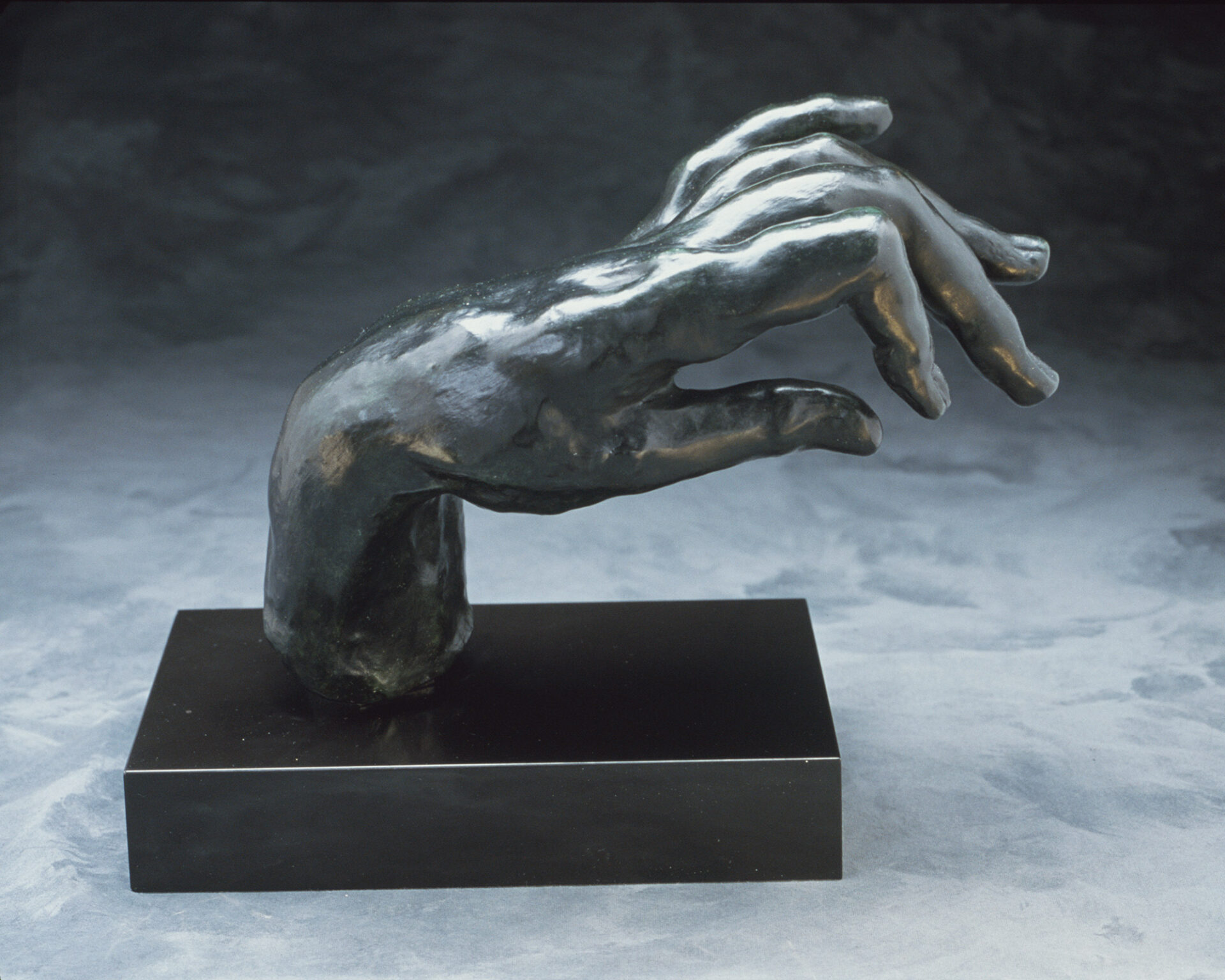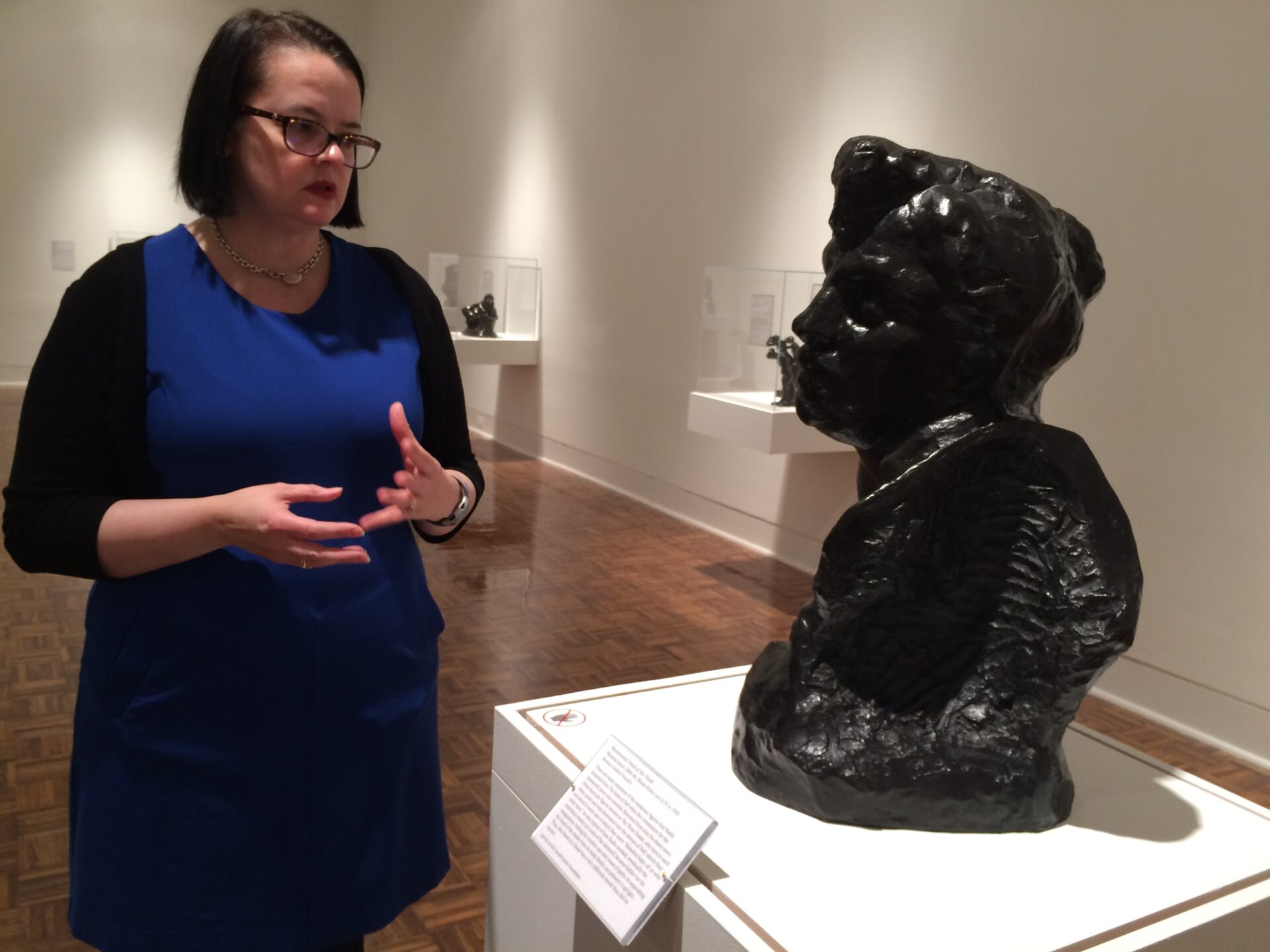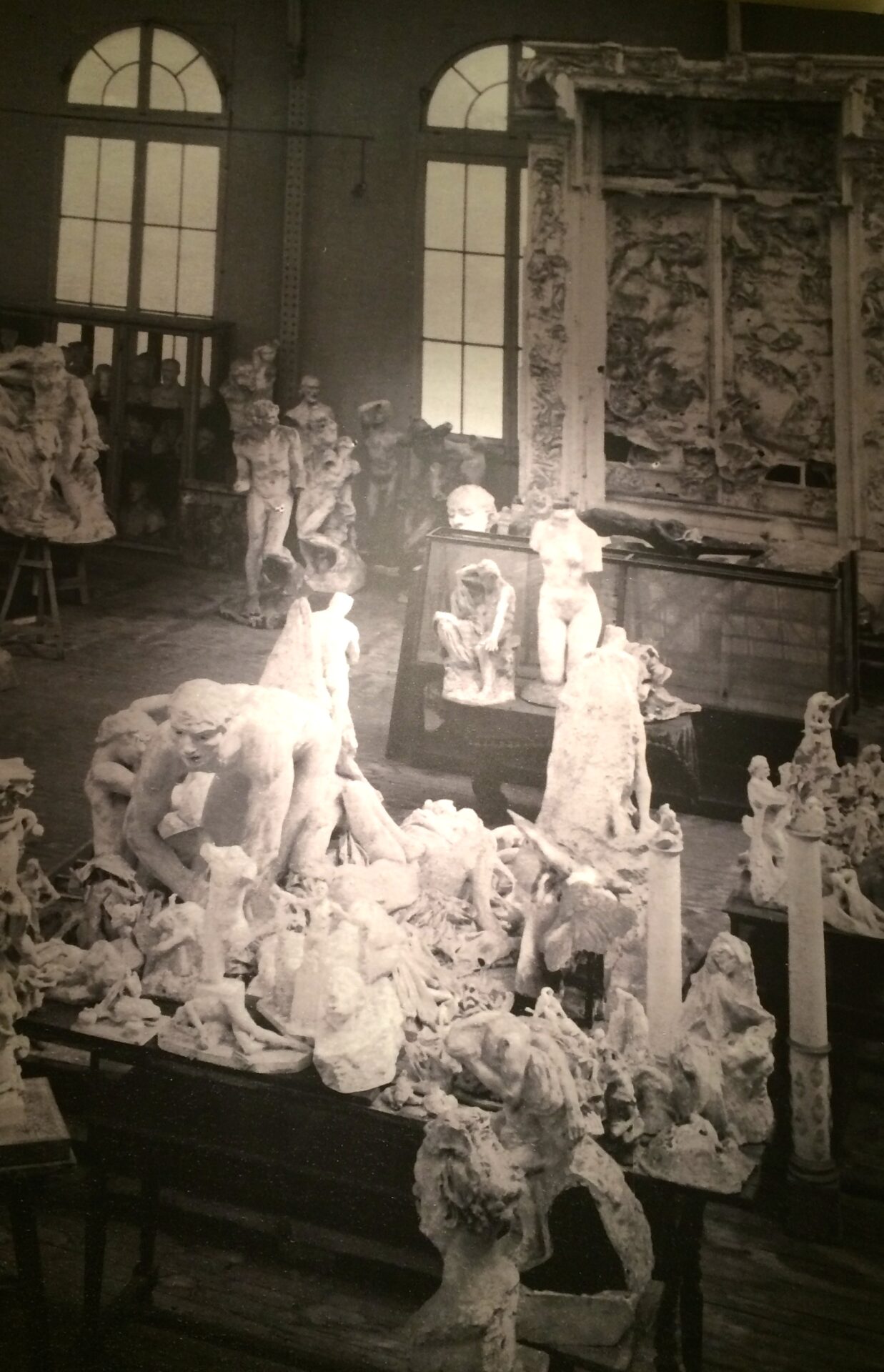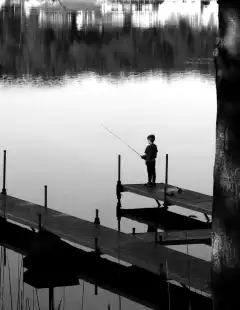By Jan Worth-Nelson
A roomful of bronze sculptures by the famed artist Auguste Rodin might suggest to viewers that the human condition is full of muscular beauty and also struggle. In a city where toxic water has taken politics right into our bodies, it seems timely to reflect on what those bodies are and what might equip them to survive.

Auguste Rodin, French, 1840-1917: Large Hand of a Pianist modeled 1885; Musée Rodin cast 9 in 1969 Bronze; Georges Rudier Foundry 7 ¼ x 10 x 4 7/8 inches. Lent by the Iris and B. Gerald Cantor Foundation. Photo used by permission of the Flint Institute of Arts.
The exhibit, Rodin: The Human Experience opened Friday at the Flint Institute of Arts and will continue through July 30. Consisting of 45 bronzes from the Iris and B. Gerald Cantor collection, the exhibit is making its only Michigan stop at the FIA. The first Rodin exhibit at the FIA in 30 years, it also falls serendipitously on the 100th anniversary of the artist’s death.
Rodin’s gorgeous human bodies are not smiling hunks with cliched six-pack abs. In fact, though many of the sculptures are labeled “portraits,” it is not their faces that stand out so much as the curve of a back, a flexed arm, a twisted flank, robust haunches, a hand poised as if to grip piano keys. Rodin’s bodies catch motion and effort. His bodies are both thick and polished, heavily rooted to their pedestals, offering a sense of being grounded resolutely, sometimes with a suggestion of anguish. Yet paradoxically, Rodin’s bodies don’t just stand there. They appear wrapped up in flexing their strength, coiling, pushing and pulling within themselves.
“He was all about capturing movement,” Tracee Glab, FIA curator of collections and exhibitions, stated. “The sculptures are animated — looking, turning — that was Rodin’s genius — you could feel that.”

FIA curator Tracee Glab explaining elements of the piece “Monumental Head of the Shade,” meant to be part of Rodin’s massive work “The Gates of Hell.” The piece was never finished in his lifetime. (Photo by Jan Worth-Nelson)
“Human experience” is a good title for the exhibit, Glab continued, because the works explore “our inner emotions, turmoil, hope, and optimism and how all that is tied into our body: you either celebrate or suffer or a combination of these things.”
And, in yet another reminder that almost nothing about the body — even art that celebrates its fortitude — is immune to dispute, the Rodin show arrives with a whiff of controversy — a little fine-art dustup that gets at how art is made and how an artist’s wishes are handled after death.
A Florida artist has made it his lifetime work to call the Cantor collection’s Rodin bronzes “frauds.” Gary Arseneau, a lithographer of Fenandina Beach, Florida, has peppered media around the country, following the collection on its tours, with letters and emails. His argument is summed up with the statement “the dead don’t sculpt, much less sign and number.”
The heart of his claim is based on truth: that the castings of many of Rodin’s sculptures were done after his death. Arseneau goes beyond that part of the story by calling them “non-disclosed posthumous second generation removed forgeries with counterfeit ‘A Rodin’ signature in bogus editions.” The Cantor collectors, along with the French government, vehemently contest that characterization.
But Arseneau’s obsession is predictable enough that Chene Koppitz, the FIA’s coordinator of communications and marketing, sent an email to FIA board members before the bronzes arrived warning them to expect his claims to surface locally.
In fact, Arseneau did contact East Village Magazine with a letter it turns out he has supplied to many media markets where the bronzes have landed.
In response, Koppitz provided an email explanation to EVM and reiterated the FIA’s position in an in-person interview in the Rodin gallery with Glab.

The exhibit includes a huge photograph of Rodin’s Paris studio. (Photo of the photo by Jan Worth-Nelson)
Glab said it was, and has continued to be, quite common for bronze sculptors not to do their own casting. Further, Rodin in particular was ambitious for his work to be widely distributed, and, in fact, sold scores of casts from the plasters and molds of a single work during his lifetime. Glab said, for example, more than 300 casts of his work “The Kiss” were made during his lifetime.
Koppitz explained that in 1916, a year before his death, Rodin “willed his entire estate including his artistic property and the right to continue to cast his works posthumously, to the nation of France.” and gave permission to make bronzes. The Musee Rodin in Paris has been casting sculptures from Rodin’s molds ever since, and determines what is an original cast — including those in the Cantor collection.
Forty years after Rodin’s death, however, the French government passed a law limiting how many casts could be made from one piece — a total of 12. All this material — the date of the original plaster/mold, if known, plus the date of the casting — is included in placards accompanying each work in the Rodin show at the FIA.
Rodin was taught his methods in a very traditional way, Glab explained, using clay and plaster for casts used to create the bronzes. Rodin was very particular about which foundry he used, Glab said, adding “the master” would actually not be in the foundry when the bronzes were being made.
Rodin asserted his sculptures were “not meant to be perfect,” Glab said — he did not want the finished figure to look like a “perfect China doll.” Instead, he preserved “every tool mark, every thumb print.”
“He wanted you to know that Rodin was there,” Koppitz said.
Koppitz offered that the pleasure of a single artist exhibit is that “You can really kind of dig in, and understand what this person was all about,” while attending to one’s own reactions.
Asked how spending time with a roomful of bronze figures might do us good, Glab suggested a larger question: Why should we spend time looking at art in general? Why is art a necessity when there are so many other things going on in the world?
“Art is an expression of being human,” she said. “The first indication of us becoming human was we made art. When that kind of core thing happens, whether you love it or hate it or are indifferent, it’s a basic human expression.
“The more you look at it, the more you will understand it, the more you will understand your reactions to it,” she said.
“We [at the FIA] provide labels to provide context, because that’s what we do. But honestly, your reaction is the right reaction.” The pleasure of all that, Glab suggested, is what makes life worth living.
The Flint Institute of Arts, 1120 E. Kearsley St., is open 12-5 p.m. Monday through Friday, 10 a.m. to 5 p.m. on Saturday, and 1-5 p.m. on Sunday. The FIA cafe and museum shops have longer hours — go here for details. Every Saturday admission is free, and on other days rates vary from free for FIA members, to $5 for students and seniors, and $7 for all other adults.
EVM Editor Jan Worth-Nelson can be reached at janworth1118@gmail.com.


You must be logged in to post a comment.